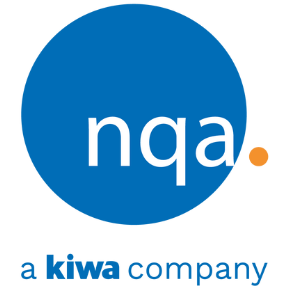ISO 9001: Quality Management Systems (QMS)
What is ISO 9001?
ISO 9001 is defined as the internationally recognised standard for Quality Management Systems (QMS). It is the most widely used QMS standard in the world, with over 1.25 million certificates issued to organisations in 178 countries.
ISO 9001 provides a framework and set of principles that ensure a common-sense approach to the management of your organisation to consistently satisfy customers and other stakeholders. In simple terms, ISO 9001 certification provides the basis for effective processes and effective people to deliver an effective product or service time after time.
The key to any successful business is strong quality control. If you want your operations to thrive, your potential consumer base must be confident that the goods or services you offer meet or exceed expected standards. ISO 9001 is a quick and easy way for potential consumers to see if your company has put the time and effort into making sure your product or service is the best it can possibly be.
The standard follows the common structure provided by Annex SL. ISO 9001:2015 is compatible with other management systems, such as ISO 14001, making it effective and efficient to integrate management systems.
Looking to implement an ISO 9001 management system? Not sure where to start? Take a look at our ISO 9001 Implementation Guide here.
The 10 Clauses of ISO 9001:2015
The ISO 9001:2015 standard is structured into 10 clauses.
-
Clauses 1-3 (Introductory): Scope, Normative References, and Terms and Definitions.
-
Clause 4 - Context of the Organisation: Understanding internal and external issues relevant to the QMS, and the needs and expectations of interested parties.
-
Clause 5 - Leadership: Requirements for top management's involvement, establishing quality policy, and assigning roles and responsibilities.
-
Clause 6 - Planning: Addressing risks and opportunities, establishing quality objectives, and planning for changes.
-
Clause 7 - Support: Requirements related to resources (people, infrastructure, environment), competence, awareness, communication, and documented information.
-
Clause 8 - Operation: Planning and control of operational processes, requirements for products and services, design and development, control of externally provided processes, production / service provision, release of products / services, and management of nonconforming outputs.
-
Clause 9 - Performance Evaluation: Monitoring, measurement, analysis, evaluation, internal audit, and management review.
-
Clause 10 - Improvement: Addressing nonconformities and taking corrective actions, and continual improvement of the QMS.
Benefits of ISO 9001 Certification
Customer satisfaction
Deliver products that consistently meet customer requirements and a service that is dependable and can be relied on.
Reduced operating costs
Continual improvement of processes and resulting operational efficiencies mean money saved.
Improved stakeholder relationships
Improve the perception of your organization with staff, customers and suppliers.
Legal compliance
Understand how statutory and regulatory requirements impact your organisation and its customers.
Improved risk management
Greater consistency and traceability of products and services means problems are easier to avoid and rectify.
Proven business credentials
Independent verification against a globally recognised industry standard speaks volumes.
Win more business
Procurement specifications often require certification as a condition to supply, so certification and verification opens doors.
The 7 Quality Management Principles
ISO 9001 is built upon a set of fundamental principles that guide an organisation's approach to quality management and any organisation can benefit from it.
-
Customer focus: Organisations must strive to meet and exceed customer needs and expectations, continuously monitoring feedback for improvement.
-
Leadership: Top management plays a crucial role in establishing unity of purpose and direction, creating an environment where people are engaged in achieving quality objectives.
-
Engagement of people: Competent, empowered, and engaged people at all levels are essential to enhance the organisation's capacity to create and deliver value.
-
Process approach: Managing activities as interconnected processes helps achieve consistent and predictable results more effectively and efficiently. This often ties into the Plan-Do-Check-Act (PDCA) cycle.
-
Improvement: Continuous improvement is a permanent objective of the QMS, enabling organisations to adapt to changes and enhance performance.
-
Evidence-based decision making: Decisions should be based on the analysis and evaluation of data and information, leading to greater objectivity and improved outcomes.
-
Relationship management: For sustained success, organisations should aim to manage their relationships with interested parties, such as suppliers, to optimise their performance.
Why become ISO 9001 certified?
-
The Annex SL structure provides a common language between ISO management systems that streamlines the path to compliance related certifications.
-
The focus on risk identifies areas of concern in advance and allows you to allocate resources where they are most needed.
-
The leadership requirement engages upper-level management and brings quality assurance more in line with overall business objectives.
-
The performance evaluation and self-governance components can foster innovation and deliver enhanced value for stakeholders whilst delivering business credibility.
-
The emphasis on organisational context within the ISO 9001 standard looks at quality management from a big-picture perspective.
Steps to Certification
-
Step 1
Complete a Quote Request Form so we can understand you and your business. We will then use this to personally prepare a proposal for your certification and define what is known as your 'scope of assessment'.
-
Step 2
We will then contact you to book your assessment with an NQA assessor. It consists of two mandatory visits that form the Initial Certification Audit. Please note that you must be able to demonstrate that your management system has been operational for a minimum of three months and has been subject to a management review and a full cycle of internal audits.
-
Step 3
Following a successful stage two audit, a decision is made. If positive, your certification will be issued by NQA, with both a hard and soft copy of the certificate awarded. Certification is valid for three years and maintained through surveillance audits (years one and two) and a recertification audit in year three.


